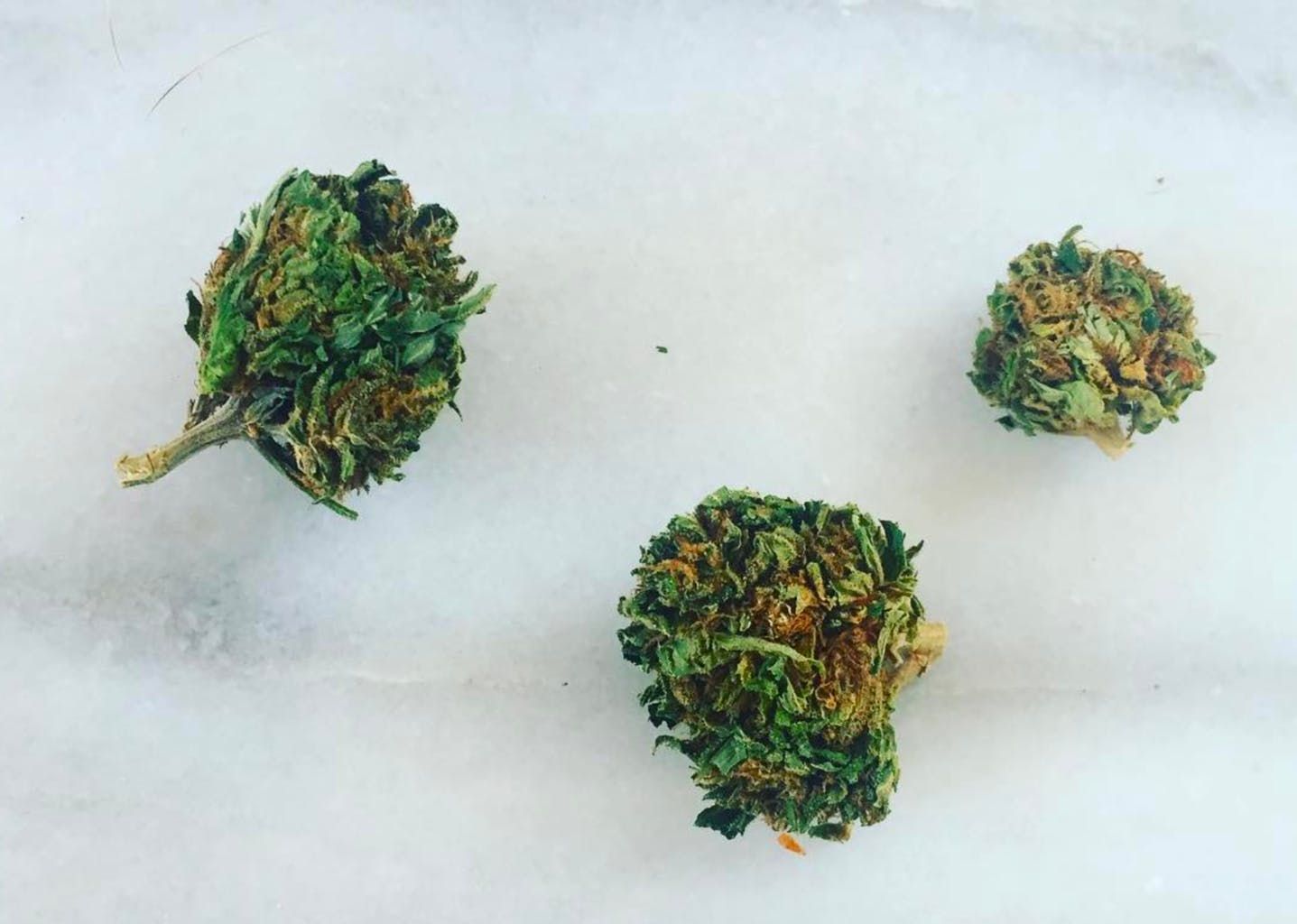For experienced cannabis consumers, with more than just a working knowledge of their bud, it’s easy to recognize common strain names like Blue Dream, OG Kush, Jack Herer, Sour Diesel or Trainwreck. They are familiar names in frequent circulation, which have made their way into smoke worldwide with rave reviews. Many strain names are innocuous but there are the strain names that may give a consumer a bit of a pause.
Many people may not mind buying strains with names like Alien Asshat, Purple Monkey Balls, Bubba’s Bitch, Devil’sTit or Alaskan Thunderfuck. However, there are others who could, understandably, be a bit turned off from a great strain of medicine just because they can’t reconcile asking for a strain called Pineapple Dog Shit from the dispensary with a straight face.
The Strain Names Game
What, exactly, is in the name of a strain? Well, not much, according to industry professionals. Strain names, though entertaining, typically fail to accurately indicate the genetic profiles, terpene content or present cannabinoids in a plant. Thankfully, dispensaries can let consumers know whether a strain is indica, sativa or hybrid as well as the percentage of THC and CBD but often can’t promise consistent effects due to minor but significant variances in each plant.
The case for moving away from strain names has less to do with eradicating what some would rightfully consider some very silly names as identifiers and more to do with moving towards standardizing strain information to empower patients with the knowledge to choose strains based on effects.
Genotypes, Phenotypes, Cannabinoids—Oh My!
A number of factors from whether a plant was grown indoors with artificial light or outdoors in the sun to whether or not it’s organic or was grown with pesticides can make differences in the makeup of the chemical compounds, for starters. For example, the strain Chem Dawg cultivated by one grower can be wildly different from another’s based on variances in growing methods, especially the environment, that drastically affects the genotype (genetic makeup) and phenotype (observable physical characteristics) of a plant. In fact, the environment plays a major role in everything from the flavor, color, shape and density to aroma, terpene profile and resin production.
RELATED: WHAT MAKES EACH MARIJUANA STRAIN UNIQUE?
With a maturing industry that is learning to cater to and be inclusive of consumers with a wide range of experiences with cannabis and varying levels of understanding, moving away from seemingly random strain names and towards more standardized, information-based identifiers can be a major game changer in how cannabis is consumed.
A Step in the Right Direction
There are already some brands and companies that have started to rely less on strain names and instead emphasis the chemical compounds that make up the plant and the effects one should expect after consuming it. Many believe that providing more consistent and clear genomic information like cannabinoid profiles beyond just THC and CBD content not only legitimizes an industry that already operates in the grey area of regulations but can give consumers an opportunity to make more informed decisions.
So, what is the future of strain names? Realistically, strain names will probably always have a place in the ever-evolving cannabis industry but the goal is that the industry will be able to find a way to ensure consistency across the board when it comes to cannabinoid profiles for specific strains. What that means is that strain names will be an indicator of the chemical profile, not just a way to get to smirk or cringe while you’re trying to figure out the best way to medicate.
If you are new to cannabis and want to learn more, take a look at our Cannabis 101 post. HelloMD can help you get your medical marijuana recommendation; it’s 100% online, private and efficient.






